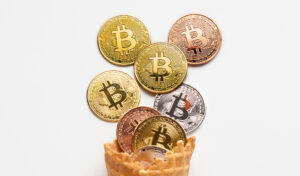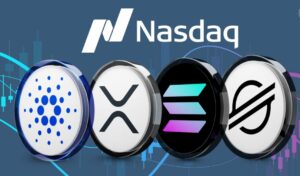
Cryptocurrency has transformed finance, but its unique language can feel like a barrier. Understanding terms like “blockchain,” “hodl,” or “DeFi” is essential for navigating this digital frontier. This guide simplifies Cryptocurrency terminology, empowering you to engage confidently in the crypto world.
Why Cryptocurrency Terminology Matters
The crypto space thrives on innovation, and its vocabulary reflects that dynamism. Whether you’re trading on platforms like those listed on CryptoExList, investing in altcoins, or exploring decentralized finance, grasping these terms unlocks opportunities. Misunderstanding them, however, could lead to costly mistakes—imagine confusing “gas fees” with something unrelated to transaction costs! This article breaks down the jargon, making it accessible and actionable.
What Is Cryptocurrency?
Cryptocurrency is digital money powered by cryptography, ensuring security and decentralization. Unlike traditional currencies controlled by banks or governments, cryptocurrencies like Bitcoin operate on peer-to-peer networks. This independence eliminates intermediaries, offering users greater control. For example, when you send Bitcoin, the transaction is verified by miners, not a bank, highlighting the shift from centralized authority to distributed trust.
Blockchain: The Backbone of Crypto
Every cryptocurrency relies on a blockchain—a digital ledger recording all transactions. Think of it as an unalterable history book, maintained by a network of computers (nodes). Each “block” contains data, like payment details, linked to the previous one, forming a chain. This structure ensures transparency; anyone can view Bitcoin’s blockchain, for instance, to trace a coin’s journey. It’s the foundation of trust in a trustless system.

How Blockchain Enhances Security
Security isn’t just a buzzword in crypto—it’s a necessity. Blockchain’s decentralized nature means no single entity can alter it without consensus. Hackers targeting one node can’t rewrite the ledger because thousands of others hold identical copies. Encryption further protects data, making blockchain a fortress for digital assets.
Bitcoin (BTC): The Pioneer
Bitcoin, launched in 2009 by the mysterious Satoshi Nakamoto, sparked the crypto revolution. It’s a decentralized currency designed for peer-to-peer payments without banks. Limited to 21 million coins, its scarcity drives value—think of it as digital gold. People use Bitcoin to buy goods, invest, or simply “hodl” (more on that later) as a long-term asset.
Altcoins: Beyond Bitcoin
Altcoins are any cryptocurrencies besides Bitcoin. Ethereum, Ripple (XRP), and Cardano are prime examples, each with unique features. Ethereum, for instance, introduced smart contracts—self-executing agreements coded into the blockchain. Altcoins diversify the market, offering alternatives tailored to specific needs, like faster transactions or enhanced privacy.
Ethereum and Smart Contracts
Ethereum’s innovation lies in smart contracts, which automate processes without intermediaries. Imagine renting an apartment: a smart contract could release payment to the landlord only when you receive the key. This programmability extends crypto’s utility beyond simple currency, fueling applications like decentralized apps (dApps).
Wallets: Storing Your Crypto
A crypto wallet doesn’t hold coins like a physical one; it stores private keys—codes granting access to your funds on the blockchain. Software wallets (e.g., MetaMask) are convenient for daily use, while hardware wallets (e.g., Ledger) offer offline security against hacks. Losing your private key means losing your crypto, so safeguarding it is critical.

Hot vs. Cold Wallets
Wallets split into “hot” and “cold” categories. Hot wallets stay online, ideal for quick trades but vulnerable to cyberattacks. Cold wallets, like USB-like devices, remain offline, providing robust protection for long-term storage. Choosing between them depends on your priorities—convenience or security.
Mining: Powering the Network
Mining validates transactions and creates new coins. Miners use powerful computers to solve complex math problems, confirming blocks on the blockchain. In return, they earn rewards—like Bitcoin or Ethereum. It’s energy-intensive, though, sparking debates about sustainability. For instance, Bitcoin mining consumes more electricity annually than some countries!
Hashing: Securing the System
Hashing transforms data into a fixed-length string (a hash) using algorithms like SHA-256. It’s a one-way process—easy to create, impossible to reverse. In blockchain, hashing links blocks and verifies integrity. If someone tampers with a transaction, the hash changes, alerting the network to fraud.
Exchanges: Crypto Marketplaces
Exchanges like Binance or Coinbase let you buy, sell, or trade crypto. Centralized exchanges (CEXs) act as middlemen, offering user-friendly interfaces but holding your funds. Decentralized exchanges (DEXs), like Uniswap, let you trade directly via smart contracts, prioritizing privacy and control. Exploring options on CryptoExList can help you find the right platform.
Hodl: The Crypto Mantra
“Hodl” started as a typo on a Bitcoin forum (“I am hodling”) but became a mindset: holding crypto long-term despite volatility. Hodlers believe in future value, resisting the urge to sell during dips. It’s a strategy rooted in patience—Bitcoin hodlers from 2013, for example, saw massive gains by 2021.
FOMO and FUD: Emotional Drivers
FOMO (Fear of Missing Out) drives impulsive buying when prices soar—think of panic purchases during a Bitcoin rally. FUD (Fear, Uncertainty, Doubt) spreads negativity, often crashing prices as investors sell. Recognizing these emotions helps you make rational decisions, not knee-jerk reactions.
Gas Fees: Transaction Costs
On Ethereum, “gas” powers transactions, like fuel for a car. Gas fees, paid in ETH, vary with network demand—higher during congestion. A simple transfer might cost $5, while complex DeFi actions could hit $50 or more. Understanding gas optimizes your spending on the blockchain.
DeFi: Decentralized Finance
DeFi reimagines finance without banks, using blockchain and smart contracts. Platforms like Aave let you lend or borrow crypto peer-to-peer, earning interest or accessing funds instantly. It’s open to anyone with an internet connection, democratizing finance—but risks like smart contract bugs require caution.
Yield Farming and Staking
DeFi introduces yield farming, where you lend crypto to liquidity pools for rewards, often high annual percentages (e.g., 10-20%). Staking, meanwhile, locks your coins to support a network (like Ethereum 2.0), earning you passive income. Both amplify returns, though volatility and lockup periods demand careful planning.
NFTs: Unique Digital Assets
Non-Fungible Tokens (NFTs) are one-of-a-kind digital items, like artwork or collectibles, stored on the blockchain. Unlike interchangeable Bitcoin, each NFT has distinct value—think of a rare painting versus cash. Artists sell NFTs for millions, but buyers must weigh their long-term worth.
Sharding: Scaling Solutions
Sharding splits a blockchain into smaller pieces (shards) to process transactions faster. Ethereum’s upgrade to sharding aims to handle thousands of transactions per second, rivaling Visa. It’s a technical fix for scalability, ensuring crypto can grow without choking on it ssuccess.

KYC and AML: Compliance Buzzwords
KYC (Know Your Customer) verifies user identities on exchanges, while AML (Anti-Money Laundering) prevents illicit funds from flowing through crypto. Regulators enforce these to curb crime, but they clash with crypto’s anonymity ethos. Compliant platforms on CryptoExList often require ID uploads.
51% Attack: A Network Threat
A 51% attack occurs when someone controls over half a blockchain’s computing power, potentially rewriting transactions. It’s rare—Bitcoin’s vast network makes it impractical—but smaller chains are vulnerable. Decentralization and miner diversity deter such risks.
Rug Pull: Beware the Scam
In a rug pull, developers hype a project, collect funds, then vanish, leaving investors with worthless tokens. DeFi and NFT spaces see this often—millions disappeared in 2021 scams. Researching teams and auditing code (if available) protects you from these traps.
Conclusion
Cryptocurrency terminology might seem daunting, but it’s the key to mastering this evolving landscape. From blockchain’s secure ledger to DeFi’s financial freedom, each term reveals a piece of the puzzle. Whether you’re trading on exchanges listed at CryptoExList, hodling Bitcoin, or exploring NFTs, understanding these concepts empowers you. Start small—learn a term a day—and soon, you’ll speak crypto fluently, ready to seize its opportunities.























